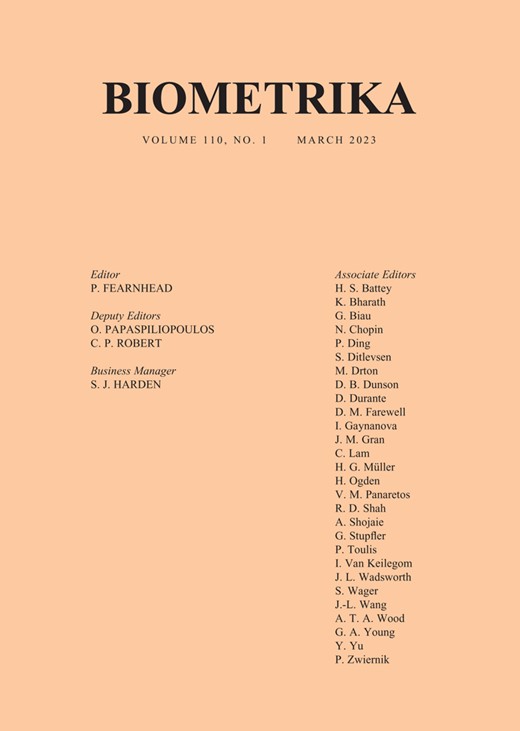-
Views
-
Cite
Cite
Y Cui, H Michael, F Tanser, E Tchetgen Tchetgen, Instrumental variable estimation of the marginal structural Cox model for time-varying treatments, Biometrika, Volume 110, Issue 1, March 2023, Pages 101–118, https://doi.org/10.1093/biomet/asab062
Close - Share Icon Share
Summary
Robins (1998) introduced marginal structural models, a general class of counterfactual models for the joint effects of time-varying treatments in complex longitudinal studies subject to time-varying confounding. Robins (1998) established the identification of marginal structural model parameters under a sequential randomization assumption, which rules out unmeasured confounding of treatment assignment over time. The marginal structural Cox model is one of the most popular marginal structural models for evaluating the causal effect of time-varying treatments on a censored failure time outcome. In this paper, we establish sufficient conditions for identification of marginal structural Cox model parameters with the aid of a time-varying instrumental variable, in the case where sequential randomization fails to hold due to unmeasured confounding. Our instrumental variable identification condition rules out any interaction between an unmeasured confounder and the instrumental variable in its additive effects on the treatment process, the longitudinal generalization of the identifying condition of Wang & Tchetgen Tchetgen (2018). We describe a large class of weighted estimating equations that give rise to consistent and asymptotically normal estimators of the marginal structural Cox model, thereby extending the standard inverse probability of treatment weighted estimation of marginal structural models to the instrumental variable setting. Our approach is illustrated via extensive simulation studies and an application to estimating the effect of community antiretroviral therapy coverage on HIV incidence.



